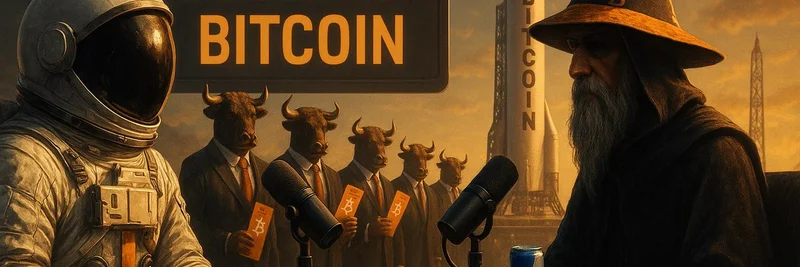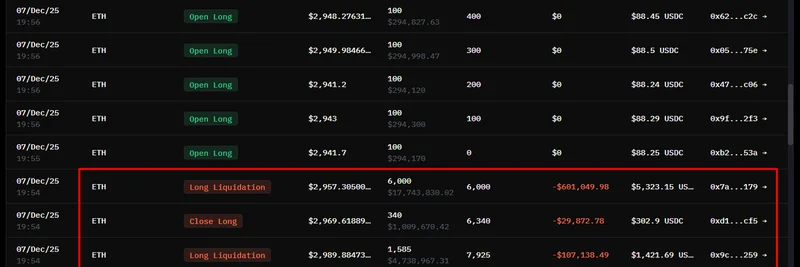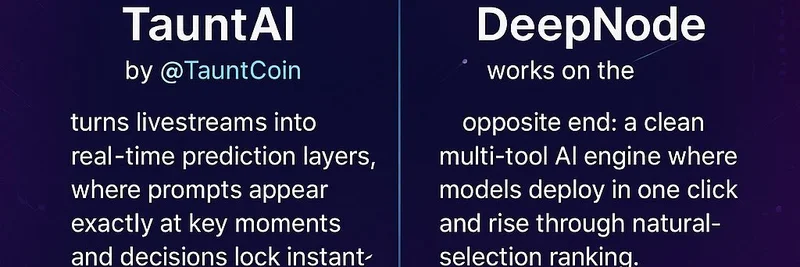The world of cryptocurrency is always buzzing, and when it comes to blending traditional finance with digital assets, few topics spark as much debate as credit and Bitcoin treasuries. In the latest episode of the True North Podcast—hosted by the sharp minds at True North—they tackled exactly that. Episode 41, titled "What is Credit," features special guest Adam Livingston, and it's a must-listen for anyone navigating the wild waters of blockchain and meme investments.
If you're new to the scene, True North is billed as "The Investment Grade Bitcoin Podcast," where authentic "kid analysts" break down the new frontier of digital capital. They go live every Wednesday at 10 PM EST, and this episode didn't disappoint. The agenda was packed, starting with an update on STR (that's MicroStrategy for the uninitiated, ticker MSTR), and diving deep into foundational questions like what money, credit, and risk really mean in today's economy.
Breaking Down the Basics: Money, Credit, and Risk
Let's start with the fundamentals because, honestly, these concepts can get murky even for seasoned pros. Money is essentially a store of value, a medium of exchange, and a unit of account—but in the Bitcoin world, it's often seen as "hard money" due to its fixed supply of 21 million coins. Credit, on the other hand, is basically borrowed money with the promise of repayment plus interest. It's the grease that keeps the financial wheels turning, but it comes with risk: the chance that the borrower can't pay back.
In the episode, the hosts and Livingston likely explored how Bitcoin challenges traditional credit systems. With fiat currencies prone to inflation (think endless money printing), Bitcoin offers a hedge. This ties into why companies like MicroStrategy are stacking sats (Bitcoin slang for satoshis, the smallest unit of BTC) as a treasury asset. It's not just hoarding; it's a strategic play against currency debasement.
Can Multiple BTC Treasury Companies Thrive?
One of the juicier parts of the agenda was discussing Bitcoin treasury companies—firms that hold large amounts of BTC on their balance sheets. MicroStrategy, led by the outspoken Michael Saylor, is the poster child here. They've amassed over 200,000 BTC, funding it through debt and equity raises. But can multiple such companies coexist? The podcast delved into "dominant empires," suggesting a winner-takes-most scenario where network effects and first-mover advantage play huge roles.
For meme token enthusiasts, this is fascinating because MSTR has evolved into something of a meme stock itself. As CNBC reports, its share price swings wildly with Bitcoin's volatility, amplified by leverage. It's like a turbocharged BTC play, drawing in retail investors much like Dogecoin or Shiba Inu do in the token space. The question is, if more companies jump on the BTC treasury bandwagon, will it dilute the meme appeal or create new opportunities?
The Debasement Trade and the Dollar Abroad
Then there's the "debasement trade"—betting against fiat currencies losing value over time due to inflation and money supply growth. Livingston and the team probably touched on how this plays out globally, with the US dollar's dominance facing challenges from emerging digital assets. For blockchain practitioners, this is key: meme tokens often thrive in debasement environments, where speculative bets on "moonshots" offer escapes from traditional finance's pitfalls.
Bad Bond of the Week and Silicon Valley Insights
No True North episode is complete without some fun segments. They spotlighted Ford Motor as the "bad bond of the week," likely critiquing its debt structure or yields in a high-interest world. Wrapping up, they compared AI and Cisco's business models, drawing parallels to how tech giants adapt—or fail to—in disruptive eras. This is super relevant for meme insiders, as AI hype has fueled tokens like those in the AI crypto niche, showing how narratives drive value.
Community Reactions: Love It or Hate It
The tweet announcing the episode (view it here) garnered mixed reactions. Some praised the panel, calling Livingston "ahead of his time," while others slammed MSTR's dilution strategies—issuing more shares to buy BTC, which can hurt existing shareholders. One reply even joked about Bitcoin hitting $10 billion per coin while MSTR's price lags due to endless dilution. Insider selling was another hot topic, with users questioning executives cashing out millions.
This controversy underscores why MSTR feels like a meme stock: it's polarizing, volatile, and driven by community sentiment as much as fundamentals. For meme token holders, it's a reminder that leverage can amplify gains but also risks—like rug pulls or dumps.
If you're building your knowledge base in blockchain, episodes like this are gold. They bridge tradfi (traditional finance) and crypto, helping you spot trends before they go mainstream. Catch the replay on X Spaces and let us know your takeaways in the comments below. Who knows? Maybe the next big meme token idea sparks from understanding credit in the Bitcoin age.
Stay tuned to Meme Insider for more breakdowns on how crypto narratives shape the market. Whether it's tokens or stocks like MSTR, we're here to keep you informed and ahead of the curve.



